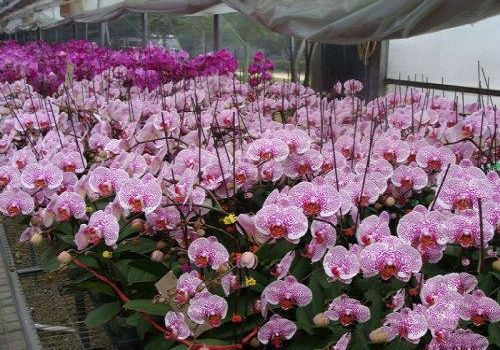Control methods of flower aphids
Aphids are called honey insects, greasy insects, etc., most of them belong to the family Homoptera and are pests of piercing and sucking □ apparatus. They often cluster in leaves, tender stems, flower buds and terminal buds, prick and suck juice, making leaves wrinkled, curled and deformed, causing branches and leaves to wither or even die in serious cases. Honeydew secreted by aphids can also cause coal fouling disease, virus disease and harm to ants. The common aphids that cause harm to garden flowers are peach aphid, peach powder aphid, cotton aphid, chrysanthemum aphid, rose aphid and so on.
The main results are as follows: (1) morphological characteristics: aphids are small and soft. The antennae are long, 6-segmented, divided into two parts: the base and the whip, and there are often round or oval sensory circles at the base from section 3 to section 6. Most aphids have a pair of ventral tubes on the back of the sixth section of the abdomen and a tail at the end of the abdomen. Aphids have winged and wingless individuals, and the reproductive modes are parthenogenesis and hermaphroditism, oogenesis and oviparity. The body colors of aphids are green, yellow, light green, dark green and so on.
(2) occurrence regularity: the reproduction of aphids is very strong, and the reproduction algebra varies greatly due to different species, climate and nutritional conditions.
① peach aphid myzuspersicaesulzer: peach aphid is called red peach aphid, tobacco aphid and so on. It distributes widely and harms many plants, such as green peach, mountain peach, plum blossom, cherry blossom, orchid, hollyhock and so on. Peach aphids occur for 10-30 generations a year in northern China, overwintering with eggs or parthenogenetic aphids in peach trees or greenhouses, and Eclosion from late February to early March in the following spring. The reproduction was accelerated at the beginning of May, and the winged aphids were produced and then migrated to other hosts. Return to peach trees for winter from October to November.
② peach powder aphid hyalopterusarundinisfabricius: mainly harms green peach and mountain peach. Plum, cherry blossom, apricot, plum, etc. It occurs for many generations every year, overwinters in winter with eggs in branches or buds such as peach and plum, hatches at the beginning of April of the following year, and propagates continuously as wingless female aphids. After the emergence of winged aphids in May, they migrate to Gramineae weeds.
③ cotton aphid aghisgossypiiglover: mainly harms hibiscus, hollyhock, Fusang, pomegranate, bauhinia, chrysanthemum, orchid, plum and so on. The annual occurrence of 20-30 generations. The winter hosts are hibiscus, pomegranate, etc., on which cotton aphids lay eggs and survive the winter. The summer hosts in flowers are chrysanthemum, citrus and so on.
④ rose aphid macrosiphumrasirorumzhang: mainly harms rose, rose and other flowers. It occurs for many generations every year, and the viviparity is dominant. The adult aphid overwintered on the leaf bud and leaf back of the host, and propagated on the new shoots, young leaves and flower buds of the rose from the first ten days of April the following year. Winged aphids began to appear in the middle of April and propagated rapidly. # p# Page title # e #
Aphids multiply rapidly under the conditions of about 20 degrees Celsius and dry climate, high temperature and humidity are not conducive to reproduction, harm and breeding peak are in mid-May and mid-late October, which should be controlled in time.
(3) Control methods: ① cleans the garden to eliminate the source of overwintering insects; ② protects ladybugs, lacewings and other natural enemies; ⑧ chemical control: spray 40% omethoate EC 1000 times, 73% Lesben 1500 times, 40% speed killing EC 2000 times, 25% enemy kill EC 3000 times, etc., spray 2 times for 3 times.
Related
- What if the leaves of potted flowers turn yellow?
- Florescence Control of several Flowers
- Anti-freezing technology and post-freezing nursing technology of flowers
- What is the classification of flowers? What are the common methods of flower classification?
- Prevention and control of alkali and acid damage of flowers in courtyard
- Technology of Anti-freezing and restoring growth of Flower seedlings in greenhouse and greenhouse
- How does flower fertilization not hurt the root? Fertilization technology of flowers
- Key points of disinfection in flower greenhouse
- Several pesticides that are banned or used cautiously in flowers
- How to fertilize the flowers that watch the leaves?



